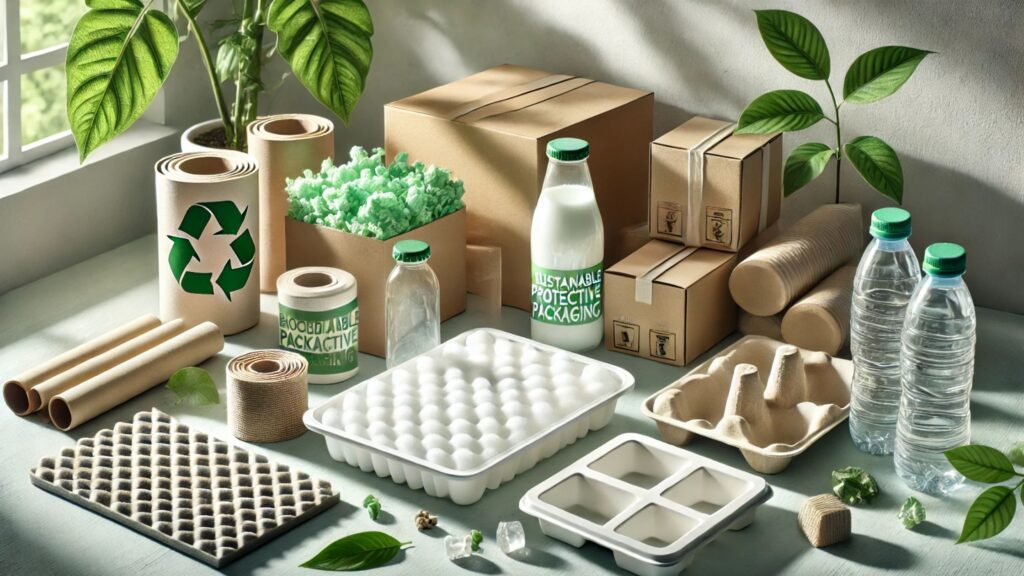In today’s world, businesses and consumers alike are prioritizing sustainability. As environmental concerns grow, the need for sustainable protective packaging has never been more crucial. Companies are seeking eco-friendly alternatives that not only protect their products but also minimize their environmental footprint. Let’s explore the latest trends, materials, and benefits of adopting sustainable protective packaging.
Why Sustainable Protective Packaging Matters
Traditional protective packaging often relies on plastic, foam, and other materials that take centuries to decompose. These materials contribute to landfill waste and pollution, causing harm to ecosystems. Sustainable protective packaging, on the other hand, focuses on renewable, biodegradable, and recyclable materials, helping to reduce waste and carbon emissions.
Eco-Friendly Packaging Materials
- Biodegradable and Compostable Materials – Materials such as cornstarch-based packaging, mushroom packaging, and seaweed-based solutions break down naturally without leaving harmful residues.
- Recycled and Recyclable Materials – Many companies are opting for recycled paper, cardboard, and plastic, ensuring that packaging can be reused or repurposed.
- Plant-Based Plastics – Also known as bioplastics, these alternatives are made from renewable sources such as sugarcane and offer a more sustainable option compared to traditional plastics.
- Molded Pulp Packaging – Made from recycled paper and cardboard, molded pulp is a durable and biodegradable alternative to plastic foam packaging.
- Air Cushioning from Recycled Content – Instead of petroleum-based plastic air cushions, some companies now use recycled materials to provide cushioning for fragile items.
Benefits of Sustainable Protective Packaging
- Environmental Impact Reduction – Using biodegradable and recyclable materials significantly lowers carbon footprints and waste production.
- Consumer Preference – More consumers are choosing brands that prioritize sustainability, making eco-friendly packaging a valuable marketing tool.
- Regulatory Compliance – With increasing regulations on plastic use and waste management, adopting sustainable packaging helps businesses stay compliant.
- Cost Savings in the Long Run – While initial costs may be higher, investing in sustainable packaging can lead to savings through reduced waste disposal fees and potential tax incentives.
How Businesses Can Transition to Sustainable Protective Packaging
- Assess Current Packaging Needs – Determine where improvements can be made and identify sustainable alternatives that fit your product requirements.
- Collaborate with Eco-Friendly Suppliers – Partner with packaging providers that specialize in sustainable materials and practices.
- Educate Consumers – Inform customers about the sustainability of your packaging and how to properly dispose of or recycle it.
- Continuous Innovation – Stay updated on the latest advancements in sustainable packaging to enhance your eco-friendly initiatives.
Final Thoughts
Sustainable protective packaging is more than just a trend—it’s a necessary step toward a greener future. Businesses that embrace eco-friendly packaging solutions can reduce their environmental impact while appealing to environmentally conscious consumers. By making the shift today, we can ensure a healthier planet for generations to come.
Are you ready to transition to sustainable protective packaging? Start exploring eco-friendly options today and make a positive impact on both your business and the environment.
Related Articles
- What is Protective Packaging? Types, Benefits & Uses
- The Art and Science of Packaging | Trends, History & Future
- Bubble Wrap Packaging: The Ultimate Solution for Product Protection
- Protective Packaging Materials: Ensuring Product Safety and Sustainability
- Shrink Packaging: The Ultimate Solution for Product Protection and Presentation
- Cosmetic Packaging: Trends, Sustainability & Brand Identity
- Candle Packaging: Enhance Your Brand with Creative & Sustainable Designs
- The Future of Sustainable Food Packaging: Innovations and Trends
- The Art of Chocolate Bar Packaging: A Sweet Blend of Design and Functionality
- T Shirt Packaging: The Ultimate Guide to Making a Lasting Impression

